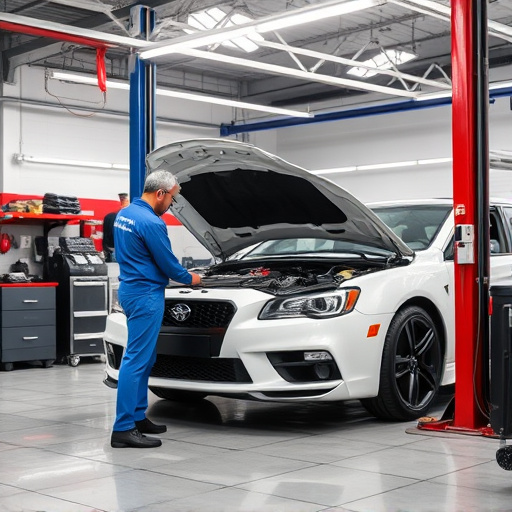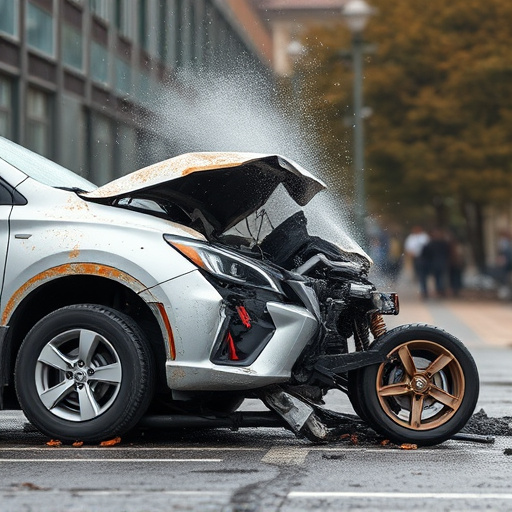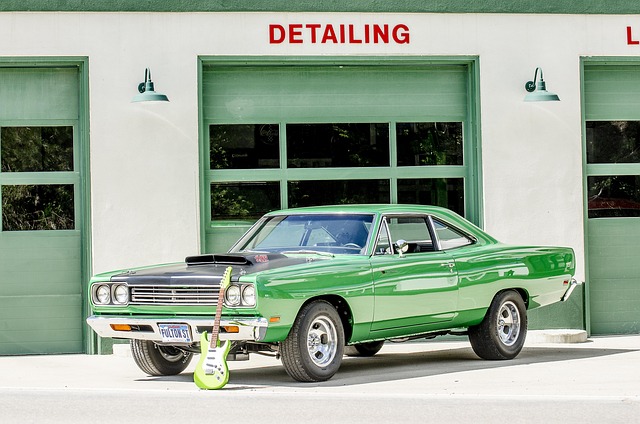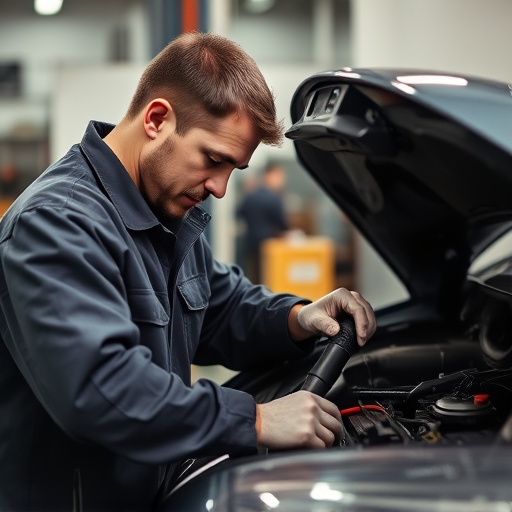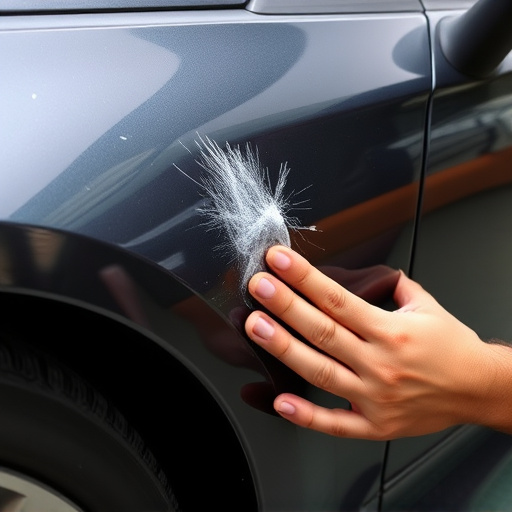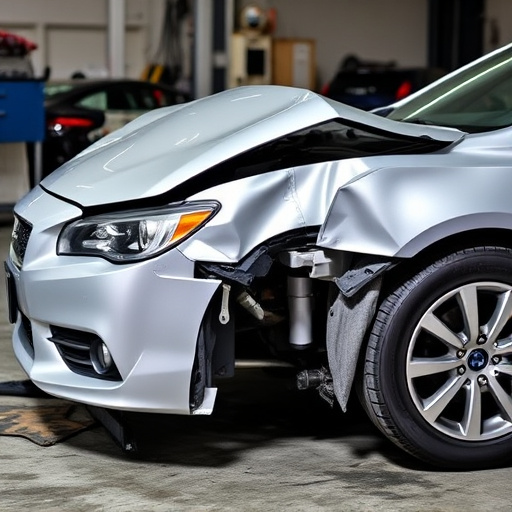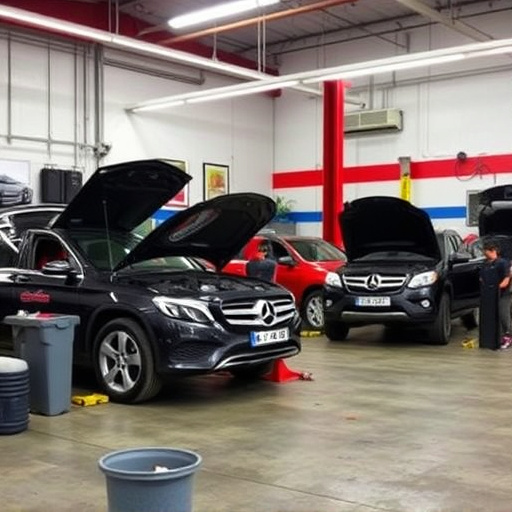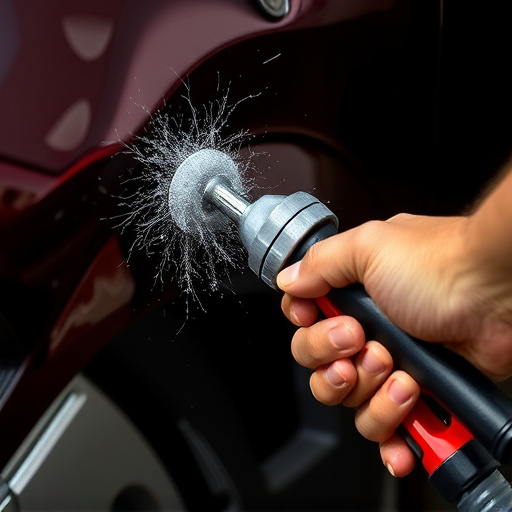Post-repair safety inspection is a vital quality assurance process for automotive body shops, ensuring vehicles meet safety standards. Skilled technicians perform meticulous evaluations beyond cosmetics, checking structural integrity and mechanical systems, to guarantee safe driving. Documentation is key, enhancing safety and compliance through detailed records of repairs, addressing potential hazards, and providing transparency between workshops and owners. Standardized templates streamline the process, reflecting the shop's professionalism in areas like dent repair and body restoration, and fostering trust among stakeholders.
In the realm of maintenance and repair, a post-repair safety inspection is a cornerstone of quality assurance. Thorough documentation plays a pivotal role in enhancing safety and ensuring compliance with industry standards. This article delves into the importance of documenting these inspections, highlighting how it verifies repairs, mitigates risks, and promotes continuous improvement. By exploring best practices for effective post-repair documentation, professionals can optimize their processes, fostering a culture of safety and excellence.
- Understanding Post-Repair Safety Inspection: The Cornerstone of Quality Assurance
- The Role of Documentation in Enhancing Safety and Compliance
- Best Practices for Effective Post-Repair Documentation
Understanding Post-Repair Safety Inspection: The Cornerstone of Quality Assurance

Post-repair safety inspection is a vital process that forms the cornerstone of quality assurance in any automotive body shop or vehicle body shop. It involves a meticulous evaluation of the repaired vehicle to ensure it meets the highest standards of safety and functionality. This critical step goes beyond cosmetic checks, delving into structural integrity, mechanical systems, and overall performance to guarantee a safe driving experience for all.
In the realm of auto maintenance, where precision and attention to detail are paramount, post-repair safety inspection serves as a quality control measure that cannot be overlooked. It allows skilled technicians to identify any lingering issues or discrepancies, rectifying them before the vehicle is released back onto the road. This meticulous process not only protects the well-being of drivers but also upholds the reputation of the automotive body shop as a reliable and trustworthy service provider in the competitive auto maintenance industry.
The Role of Documentation in Enhancing Safety and Compliance

In the context of post-repair safety inspections, documentation plays a pivotal role in enhancing both safety and compliance. Detailed records ensure that all repairs, including intricate tasks like car dent repair or extensive auto body work, are performed accurately and meet industry standards. These documents serve as a bridge between the workshop and the vehicle owner, providing transparency and reassurance. By documenting each step of the post-repair safety inspection, professionals can effectively communicate the scope of work accomplished, materials used, and any specific challenges encountered during the car body restoration process.
Moreover, well-maintained documentation acts as a safeguard for both the business and the customer. It helps in verifying that all necessary checks were conducted, potential hazards addressed, and safety protocols followed during the auto body work. This becomes especially crucial in cases where disputes arise or when proving compliance with legal and regulatory requirements is essential. Thus, it’s not just about ticking boxes; proper documentation ensures a culture of accountability and quality control in the post-repair process, fostering trust among all stakeholders involved.
Best Practices for Effective Post-Repair Documentation

Effective post-repair documentation is a cornerstone of any professional car body shop’s quality control process. It ensures that every repair, no matter how minor, is accurately recorded and can be easily referenced for future maintenance or insurance claims. Best practices involve using clear, detailed descriptions to document both the pre-and post-repair states of vehicles, including any remaining issues or areas of concern. High-quality images are also essential; they serve as visual aids that capture subtle changes or imperfections that might not be immediately apparent upon casual inspection.
Additionally, utilizing standardized templates for post-repair safety inspections streamlines the documentation process and ensures consistency across all repairs. This includes checking off completed tasks, recording part numbers, and noting any special considerations or techniques used during the repair process. Accurate and up-to-date documentation not only enhances customer satisfaction but also plays a crucial role in maintaining the car body shop’s reputation for quality and professionalism, ultimately reflecting well on its work in areas like car dent repair and car body restoration.
Documentation plays a pivotal role in ensuring the integrity and safety of repair work, making it an indispensable component of any comprehensive post-repair safety inspection process. By meticulously recording findings, outcomes, and necessary actions, teams can effectively communicate, collaborate, and maintain high standards across projects. Implementing best practices for documentation enhances compliance with industry regulations and fosters a culture of continuous improvement, ultimately upholding the quality and safety of repaired systems or structures.
